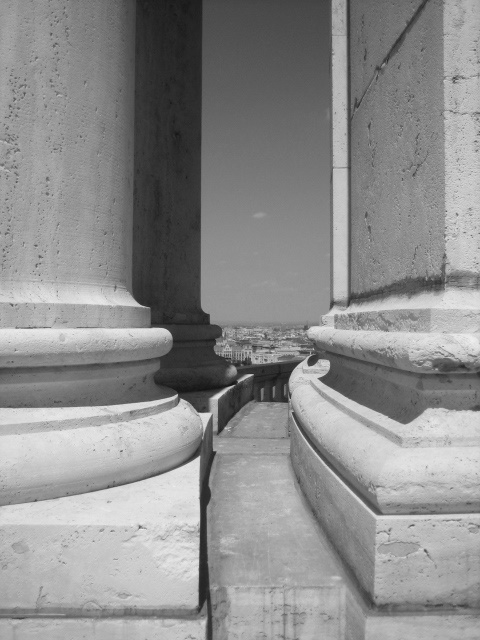Sometimes when I research ideas to write about in this blog, I’m overwhelmed by the interesting thoughts, analyses, and nuggets of light I find. Art bloggers can launch such deep thoughts! Below are a few I found this morning that I’d love to explore more fully. Good stuff. (I’m also inspired by random travel pics, like that to the left.)
- From Art 21: In a recent interview in the New Yorker, artist-of-the-moment Urs Fischer said something about how art and memory work together… something about the experience of art not being confined to the present-tense experience of being in a gallery, looking at a thing. Part of art’s test is in its retention in the mind, how it returns and why.
- From Artworld Salon: Stefan Leijnen and Liane Gabora, researchers at the University of British Columbia, Canada, point out that too much creativity may not be a good thing. Their argument boils down to this: Innovation–creativity–is necessary to introduce new ideas. But for any innovation to take root, it must also be copied. Society depends not just on creators but also on followers. If everyone invented and no one imitated, we wouldn’t advance through innovation.
- From the Guardian: The new Vincent van Gogh – The Letters: The Complete Illustrated and Annotated Edition reminds us [that] his ambition as a painter depended on words to give it focus and direction. Writing in 1888 to Theo from Arles, he says: “I saw a magnificent and very strange effect this evening. A very large boat laden with coal on the Rhône, moored at the quay. Seen from above it was all glistening and wet from a shower; the water was a white yellow and clouded pearl-grey, the sky lilac and an orange strip in the west, the town violet. On the boat, small workmen, blue and dirty white, were coming and going. Carrying the cargo ashore. It was pure Hokusai. It was too late to do it, but one day, when this coal-boat comes back, it’ll have to be tackled.” The language here is more than just the counterpart to a picture. It is actually a step in the process towards the picture. It’s a different kind of proof of Van Gogh’s practicality – and of the way that practicality is often linked to something like exhilaration.

Thanks for your link to my piece! I’m going to have a browse on your site now.
Best,
Ben
Hi Ben, thanks for your comment! I really enjoy your words/thoughts/commentary – lots of great stuff on your blog! -Lori
I agree with Fischer. Any work of art – painting, book, film, etc. – makes one kind of impression when it is being directly experienced, but the way it lingers or gnaws or sours or simply evaporates in memory can reveal deeper aspects that may have been obscured by surfaces. I think that’s true of any experience in life.
Also, thanks for sharing van Gogh’s words, revealing how his mind transformed impressions of the world into a painting even without actually doing the painting. I was happy to see him crediting Hokusai. Van Gogh’s electric brushstrokes owe a lot to Hokusai!